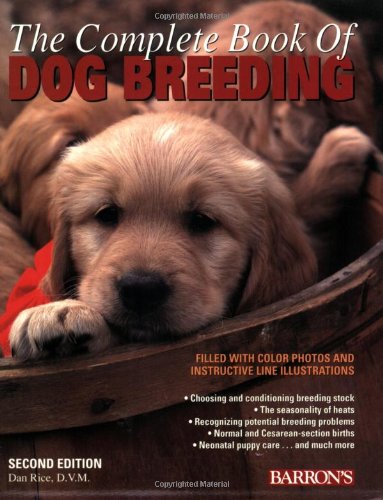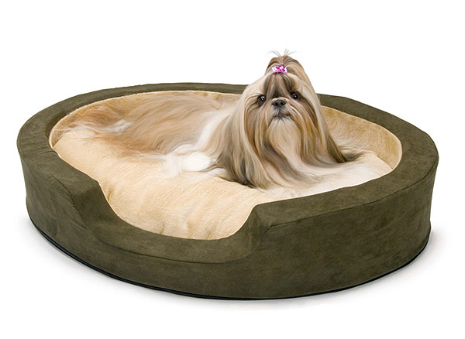What You Require To Know To Train The Puppy
Coaching dogs is not difficult, and there are multiple books, web sites and companies dedicated to telling you how to teach or perhaps dog to sit or walk at heel. Though, there are some areas of embarrassment and several things that are not at all times discussed in sufficient detail, which newbie instructors (and perhaps a few experienced guides) should consider when coaching a puppy.
1) Your puppy is NOT a wolf
There's a lot being made of the puppy-wolf connection, and genetically and ancestrally, puppies and wolves ARE associated. However, puppies are not wolves, and the distinctions are sufficiently considerable to make the study of wolf demeanor pretty much ineffective when training the dog. Wolves live in organized packs - puppies are just social. Wolves are predominately hunters who in addition scavenge - dogs are scavengers that sporadically hunt. Wolves study by observing - dogs study through repetition. Wolves are clever - puppies are intelligent. The list goes on, and there are always exclusions, but you get the concept.
If you wish to learn how to train your puppy, don't study wolves - study puppies!
2) Consistency is critical
You as the guide, and each person else in your dog's planet must be consistent in the words that are used and the behavior that is considered satisfactory.
If you use "out" to refer to going out-of-doors, do not use "out" to hunt Rover from the dining area. Each one should use "down" to tell the him to lay down, however use "off" tell him to get off the sofa or maybe off the lap.
If you are attempting to teach the puppy not to bounce on the great clothing, though the husband thinks it's good for Rover to bounce on his jeans, the puppy will always jump - hopping is more fun than keeping on the ground. If you're trying to get the dog to stop begging at the table, though the youngsters are sneaking him bits of their unwanted veggies, the dog will ask. Don't blame the puppy, however get the people to agree to the rules.
3)Sugar wins out over vinegar
Old-school training was alteration based - a jerk on the choke-chain, a swat with a rolled up news paper, yelling and rubbing their noses in "it". These techniques are out-dated, ineffective and are too likely to be misused by humans with short fuses. Paying no attention to bad behavior and rewarding fine demeanor works lot better, and will cause a closer bond with your dog.
If your puppy does somewhat inappropriately, it's adequate to state "ooops" and withhold an award, but whatever thing else smacks of penalization, which dogs don't realize. And while penalization MAY stop your puppy from repeating an action, punishment does not tell them what you desire them to do. Further, severe penalty may backfire and make your dog frightened of you or in a very fearful puppy, may earn you a well-deserved nip.
This is not to say that you might train the dog with love and treats alone. Loving and recompensing the dog without setting several rules and sticking by them will create an unmanageable monster.
4) All dogs need exercise
Dogs are pretty physical and pretty energetic, and just like little kids, they need a lot of physical exercise before you are able to get to their brains. A dog that is bouncing off the walls since they've been in a crate or perhaps a kennel for eight hours won't be considering what you are trying to teach them. Make workout a part of your coaching strategy.
5) There is no "one size fits all" method
Each different guide or dog expert has written about their method and why it's the supreme, as a rule citing multiple testimonials. The issue is, you will not necessarily feel comfortable or at ease with a method, even if it comes quite recommended, and not every method will work with every dog. If what you've been taught or what you've read isn't working, and you KNOW you've been following the guidelines faithfully, don't blame the dog or perhaps yourself - search for another strategy.
6) Troubles: Demeanor versus training versus medical
Not all issues fit neatly in any person type. A house training problem may have started with a kidney or bladder issue (medical), but may have ended up being an adverse inclination (behavioral) strengthened by mismanagement (coaching). If you are having a coaching issue, consider the medical and the behavioral factors - talk to the vet and discover a behaviorist. And do the research.
7) Do not wait till the 11th hour
If you are going to have organization, don't wait until they're knocking on the door to teach your dog some basic manners. If you are expecting a child, get the puppy applied to the concept before you are dealing with a new child. If you need to take the dog on a cross-country trip, take some vehicle rides around the neighborhood to ensure they might cope. If you get a puppy, realize that what's attractive today, possibly hazardous in a few months time. Training is much easier when you have the splendor of time, a little and willing trainee and an absence of pressure.
8) Never let them see you sweat
If you loose the temper when you're trying to train the puppy, you're lost. The dog will take your anger and disappointment in one of two ways - they are going to become scared of you (not a fine base for a relationship), or maybe they will choose to take benefit of the shortage of control (chasing a dog that won't come when called ends up being a remarkable game - for them!).
9) Use the right tools
Retractable leashes are worse than useless when training a dog, especially an extensive and/or vigorous puppy. Use a sturdy 6-foot leash, preferably skin, with a great snap fastener for most training sessions and use a long-line (a 20 foot length of clothesline will do nicely) for working on coming when called.
Collars are a hotly contested issue - the best all-round recommendation is to use the gentlest collar probable. If you feel you need somewhat more than a buckle collar, make certain you know how to use it correctly, especially if you are considering escalating to a chain training collar or a prong collar. Electronic training collars are pointless for everything but the most tricky issues - you do not need a shock collar to teach a dog to walk at heel or maybe stay off the furniture!
10) Make coaching fun, not work
People tend to treat coaching like work, not fun. Even though you're working on competitive docility, keep the coaching sessions pleasurable - you'll look forward to coaching, and your puppy will certainly be happier and more responsive. While you deciding what to teach your puppy, incorporate a few fun things too.

 Top Seven Dog Treats - A list of the best, most healthy dog treats available
Top Seven Dog Treats
It抯 easy to go to your local pet super
Top Seven Dog Treats - A list of the best, most healthy dog treats available
Top Seven Dog Treats
It抯 easy to go to your local pet super
 German Shepherd Training
Credit: West Midlands Police via Flickr
German Shepherd Training
Credit: West Midlands Police via Flickr
 Dog Pregnancy
After a dog gives birth, mos
Dog Pregnancy
After a dog gives birth, mos
 Raw Food Diet for Dogs
Raw Food Diet for Dogs: the
Raw Food Diet for Dogs
Raw Food Diet for Dogs: the
 The Particular Way To Select The Perfect Dog Bed
A very orthopedic bed s not for every single dogs. When you
The Particular Way To Select The Perfect Dog Bed
A very orthopedic bed s not for every single dogs. When you